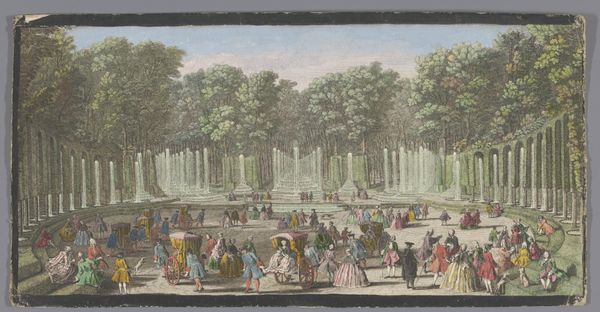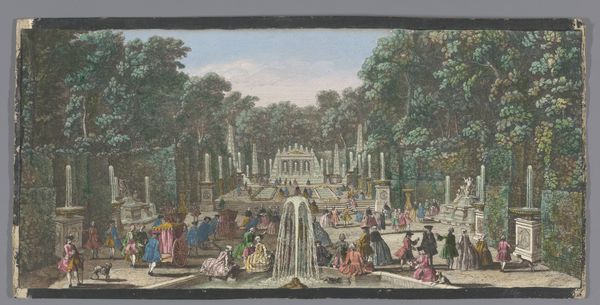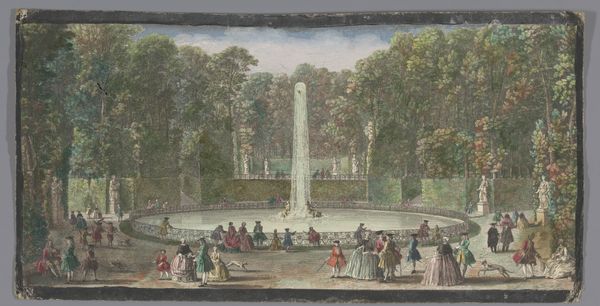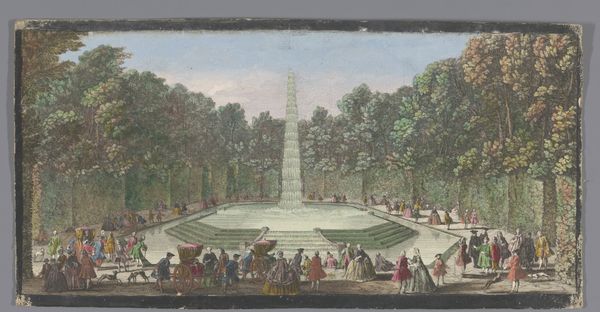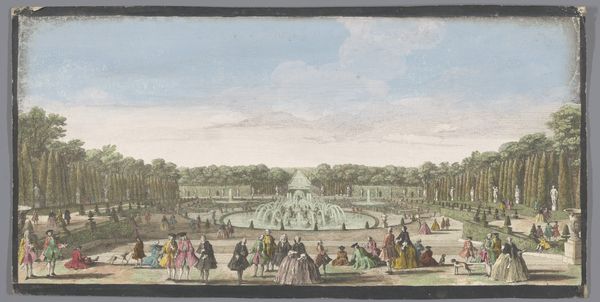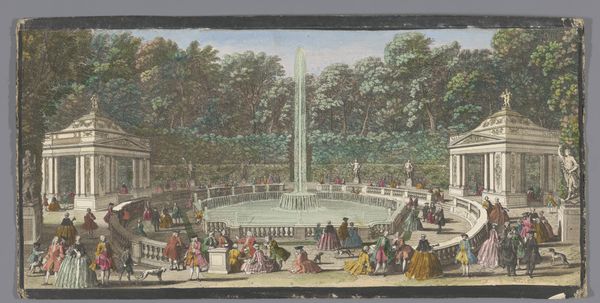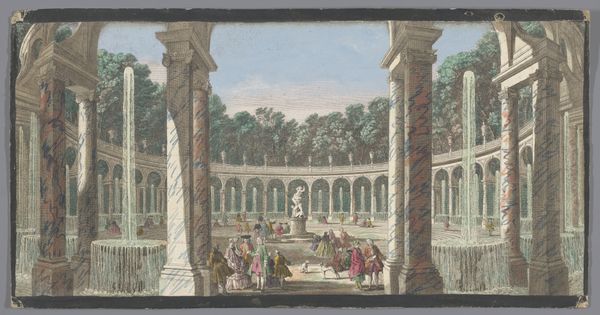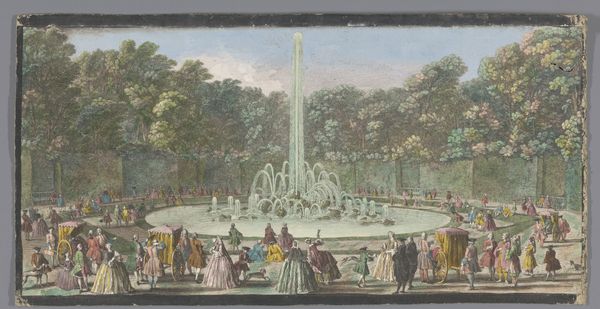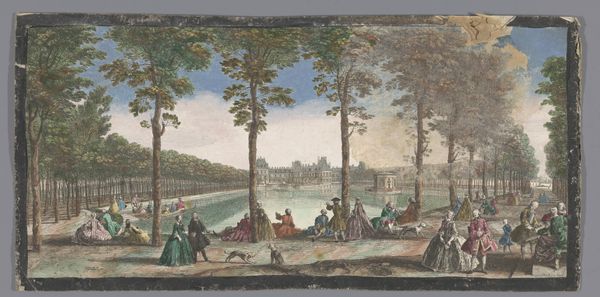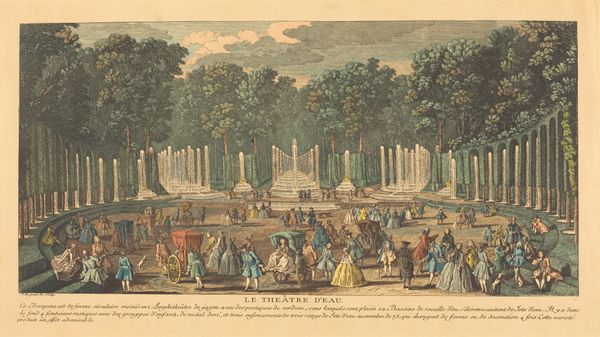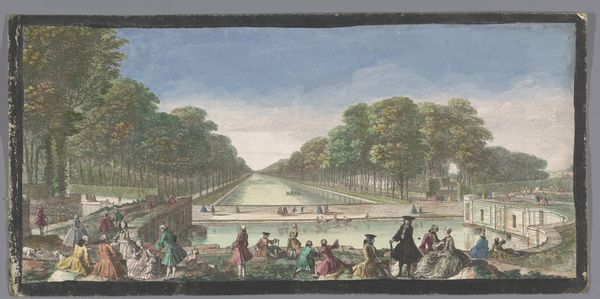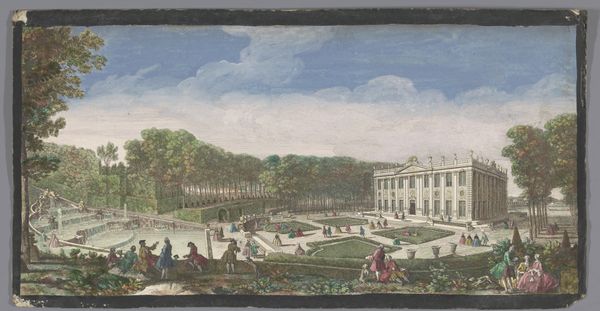
Gezicht op het Bosquet des Bains d’Apollon in de Tuin van Versailles after 1691
0:00
0:00
Dimensions: height 244 mm, width 478 mm
Copyright: Rijks Museum: Open Domain
Curator: At first glance, it feels so...idyllic. A breezy summer day with music and leisure, quite picturesque! Editor: Indeed. We’re looking at "Gezicht op het Bosquet des Bains d’Apollon in de Tuin van Versailles," a watercolor attributed to Jacques Rigaud, made sometime after 1691. What strikes me are the means of production used here. Watercolor offered a readily portable solution for documenting aristocratic spaces, enabling replications to circulate amongst patrons, therefore embedding social values. Curator: Absolutely, and those meticulously rendered figures, lounging and promenading. They really showcase the power structures at play during that time in the French court. Who got to enjoy this leisure, who labored to create it? Editor: Precisely. And what about the architectural materials, specifically used in the fountains and landscaping? Water wasn't merely decorative. Fountains required sophisticated engineering, aqueducts and human expertise to make water perform as both artwork and emblem of state power. Its value beyond sheer ornamentation. Curator: That's so true. And speaking of labor, those manicured gardens themselves represent immense, unseen work. Versailles was meant to project absolute power, using land itself as a material of dominance. Consider what Rigaud chose to emphasize, visually echoing propaganda from engravings of the day. The King is absent but everywhere implicit! Editor: It almost seems a commentary of rococo era extravagance in that respect! This medium allowed quick capture of images circulating values beyond what a patron may view in isolation: a piece made *for* an era, reflecting all. Curator: Agreed! Thank you, Rigaud, for presenting this image that, while decorative on its face, allows us to interrogate materials and systems that reinforced societal hierarchies! Editor: Indeed, it provides insight that’s hard to grasp. What does power actually *look* like at its peak of visual saturation and what impact can such curated expressions really have!
Comments
No comments
Be the first to comment and join the conversation on the ultimate creative platform.
